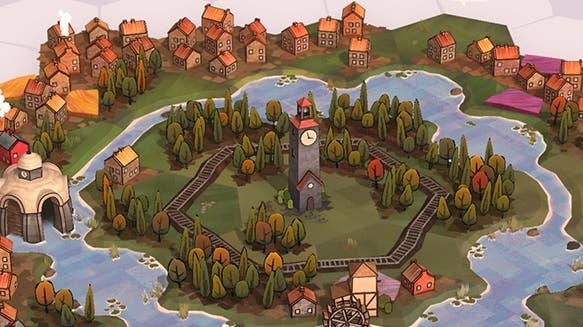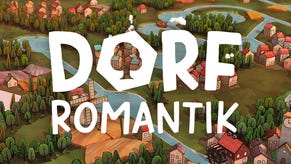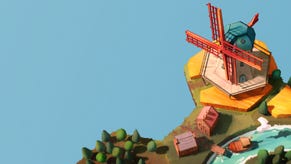Dorfromantik review - gentle elegance from a deceptively challenging village builder
Hexcellent.
Dorfromantik is still currently in early access, though as it stands its core features are intact and there's more than enough on offer for us to provide a full review.
Dorfromantik is a journey. Even 45 hours later (a shared tally because I'm not the only one in my household besotted with it) I still discover new things about it, about how it really works. And I would never have known it to look at it. To see it for the first time is to see a game so absurdly simple, and gentle, it seems strange it has scores at all. A game about placing hexagonal tiles with little houses and trees and fields on, and creating a miniature rural idyll. But make no mistake, those scores matter, and behind that beguiling simplicity is a surprisingly challenging puzzle game.
It works like this. You place tiles one at a time, rotating them and connecting them to other tiles, trying to match the things you see on them: rivers, trees, houses, rails and fields. And if you can match a certain number of them, specified by a kind of quest tile, you will get a green tick, a xylophonic "pling!" of success, and - most importantly - more tiles. Each tile you place, depending on how you place it, scores you more points, so the more tiles you have to place, the more points you will earn. Simple.
But it's the subtleties of how best to do these things that will elude and compel you for hours to come: how best to lay your houses, how best to lay your rivers. Because inevitably, in every attempt, a time comes when you turn to your pile of tiles, full of hope, only to find they have miraculously diminished while you were looking elsewhere, and with a pang of dread, realise it's game over: you don't have the pieces you need to finish any more quests.
In that moment, though, a vital thing happens: you question everything about what you just did. You look again. You search frantically for any conceivable way you can keep going, or if you've already given up, think about how you can do things differently next time. This is what progress looks like in Dorfromantik. It's uncovering wastage in your approach and realising your tiles could have been used better.
It's easier said than done, of course! Tiles rarely contain only the thing you need. Often, they have a bit of everything: houses and fields and trees, for example, and it means they have no obvious home. Where do you put them? With your houses or with your fields or your trees? And therein lies the rub, my friends! Therein lies the eternal dilemma of Dorfromantik. And it can be a bit of a pig about it.
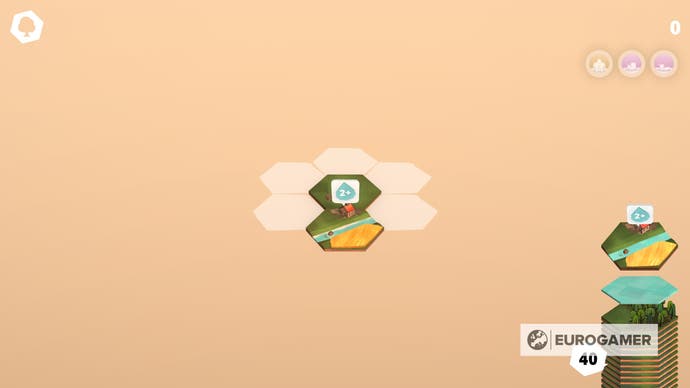
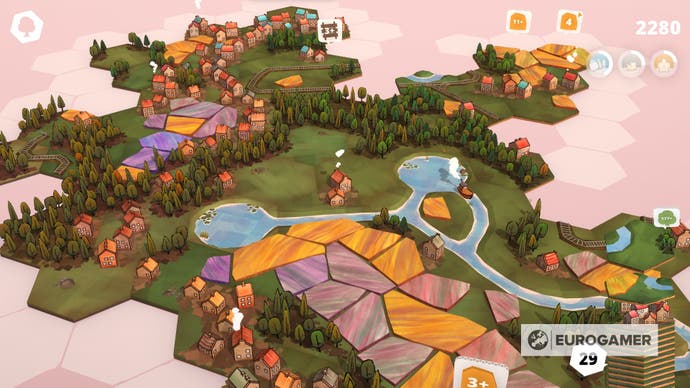

Sometimes, I think it's watching me. It's like it knows I need a cluster of one thing, because my pile is running out and things are getting serious now, so suddenly it becomes intent on giving me barely anything, like one house with a scrap of field and an awkward water bend attached. No thanks!
Or it will wrongfoot my preparations by somehow sensing I've built a huge waterway, and require a small waterway instead. If I connect it to what I've already built, I'll fail the quest because there are too many water pieces attached, and I'll miss out on the points and the new tiles as a result.
And sometimes: sometimes I wonder who's really in charge, me or the game? Am I determining the shape of what I build or is the game surreptitiously leading me?
The skill comes in finding ways to pre-emptively build while keeping all of your options open, because you never know which way it's going to go. Sometimes the tiles fall in your favour, sometimes they don't, and you need to be prepared for every eventuality. It's harder than it looks! Dorfromantik is hard. And improving at it is a skill long accrued.
But that journey of accruing it: that's the game, and it's as pleasant and relaxing, and satisfying, as any I've played. Dorfromantik is sunshine on the screen. To spend an afternoon in its company, unhurriedly placing tiles down with a soft "plonk!", while the gentle sounds of a countryside chirrup around you, is to be filled with calm. That a game this approachable can, behind that exterior, also provide such a deep and prolonged challenge is a marvel to me. It is elegance manifested. Dorfromantik is a joy.
